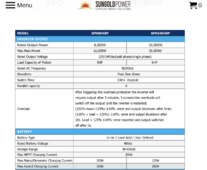cs1234
Solar Wizard
- Joined
- May 9, 2022
- Messages
- 2,791
The 1.4kw is safe to cover. You only have 1.4kw of "buffer" that is safe to export. How you use that buffer is up to you. If you run a 11kw worth of load.. and cover it with your grid-tied power.. once that load drops you will be briefly sending (11kw - 1.4k) back to the grid. They will measure something on these newer faster meters. What they will do about it, who knows.I’ve got an always on load of 1.4kw from a pool pump. When my EV stops charging at 11kw or Dryer stops, sure something would be picked up by POCO with hybrid.
The covered load must be permanent, 100% of the time, no downward deviations in wattage beyond what you are exporting / covering with your inverter.



